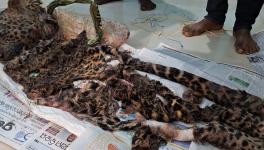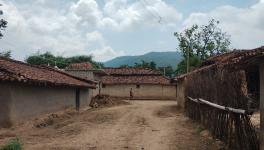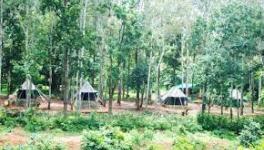Odisha: One Man’s Endeavour Brings Blackbuck Numbers Leaping Back in Ganjam Area
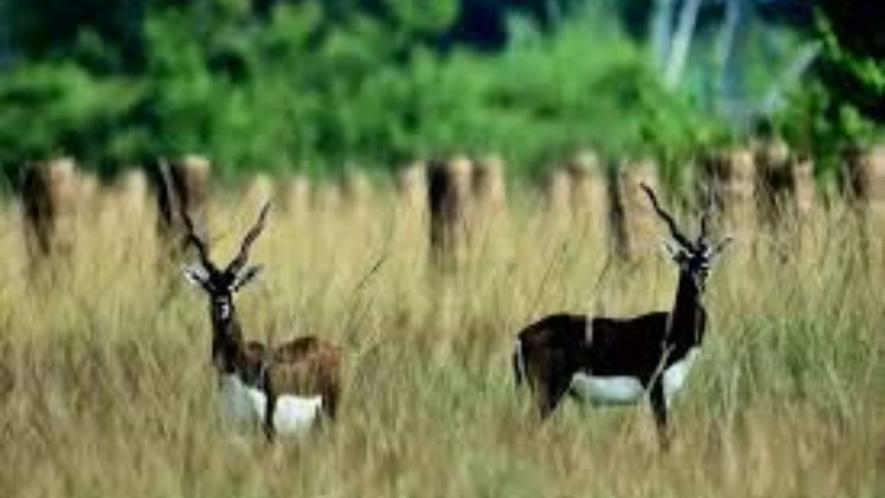
A slight flutter of wind in and around, and these animals flit around and head toward human habitations for shelter. Yes, this is the reality that is seen in Buguda forest patches in Odisha’s Ganjam district.
About 150 km from state capital Bhubaneswar lies the Buguda and Balipadar forest division, the second largest area that harbours the second largest population of Blackbucks, after Rajasthan.
A rare example of symbiosis exists in the forest reserve in Ganjam.
Perhaps, the Blackbucks know that only humans can protect them, which is why there is such a strong bonding between these animals and villagers since the past several decades.
Here we are talking about the Krusnasara Mruga or Blackbucks in Odisha, a few among wildlife species that have shown a remarkable learning to coexist with humans in the Buguda block in Ganjam district for over a millennia.
It is a different matter that these animals are also viewed as having origins in Hindu mythology, yet for years, they have been hunted for various reasons.
When this reporter visited the core areas over a decade back which the animals inhabit, the Betanoi patch, near Buguda, the sight was disappointing.
Only some villagers tried to play protectors to an extent yet that was not enough against those who killed them for venison.
The population of Blackbucks suffered a pathetic decline. Hence, they were categorised as the most endangered species in Odisha and in Rajasthan. The number came down to 300-odd then, as poachers were on the prowl.
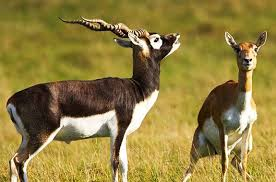
At present, when we visited the same area a weeks ago, some respite was evident due to an individual’s effort which had paid dividends. The animals appeared flitting around the Balipadar-Betnoi region and their population has reportedly increased to over 7,000 in the past 15 years.
This is nothing less than the role of Santa played by one Amulya Uapadhyay, who has dedicated his life for the past 15 years to the conservation of Blackbuck species, involving all villagers in the crusade.
Upadhyay quit a lucrative job offer and took up the new role to conserve the species. He is also a former sarpanch (village head) of Betanoi, which helped him a great deal in motivating people.
As the Blackbucks grazed on the fields like other cattle, without fear, Updhayay looked delighted like a child. He told this writer that he would any time accompany his relatives to see the picturesque sight of Blackbucks in the lush green fields.
“Our village is well-known for Blackbucks. We have a mystical bond with the animals, which stems back to a time when our town was hit by severe drought and starvation. The villagers’ lives were being impacted by dried wells and desolate farmlands. A famine-like situation was looming as all of us looked up to God to save us”, Harekrushna Das, a septuagenarian resident of Betanoi, told this writer.
“Then, one day, the rain came along with a few Blackbucks arriving in our village, and everything transformed,” he added.
Since then, there is a popular belief among the villagers who revere the Blackbucks as a sign of good fortune and consider them as ‘holy as God’.
The Blackbuck population gradually reciprocated. However, their increased number did impact agriculture, causing a few villagers to become hostile to them. Some of them began to harming them, while poachers were on a prowl to make the situation more difficult” said Upadhyay.
He said he was under moral compulsion to protect these helpless animals. However, without local monitoring and cooperation from forest officials, this was not possible. So, in 1997, Updhayay founded the ‘Blackbuck Conservation Society’ to carry out awareness initiatives that encourage villagers to fight for the species’ protection on a personal basis.
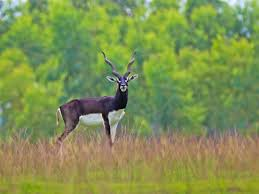
One member from each village in the region joined his society and took the job of protecting Blackbucks for his/her village.
Indeed, the forest department of the area also played a positive role in helping Upadhyay.
“We had declared a monetary reward of Rs 200 for the first person to report the birth of a Blackbuck’s fawn and a monetary prize of Rs 1,000 for the first person to report poaching of a Blackbuck while maintaining his/her anonymity. All this information is being disseminated in the local community via Dhindora in order to encourage participation and awareness. The collective effort of villagers has resulted in a spike in the population of Blackbuck,” he said.
Although officials from the forest department offered ardent support for Upadhyay’s preservation plan, complete government assistance remains a faraway goal.
An optimistic Upadhyay said, “I am hopeful that the state government will extend a helping hand to our committee one day and support our mission to provide a safe habitat for these nearly extinct species. Because Blackbucks are unique to our district, their abundance encourages tourism and helps to establish our district’s identity around the world.”
Upadhyay, who has health issues since the last one year, remains dedicated to the cause and vows to spend his entire life for the protection and increase of the Blackbuck population in the region, for which he has been recognised by the forest department on numerous occasions.
The increased strength of this rare species is a symbol of Upadhyay’s selfless efforts. One hopes more people join his cause and become guardians of this rare and fascinating species.
The writer is a freelance journalist based in Odisha.
Get the latest reports & analysis with people's perspective on Protests, movements & deep analytical videos, discussions of the current affairs in your Telegram app. Subscribe to NewsClick's Telegram channel & get Real-Time updates on stories, as they get published on our website.









